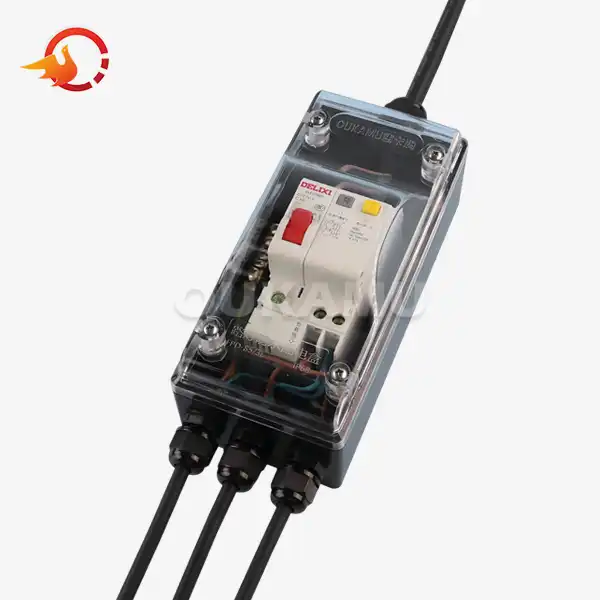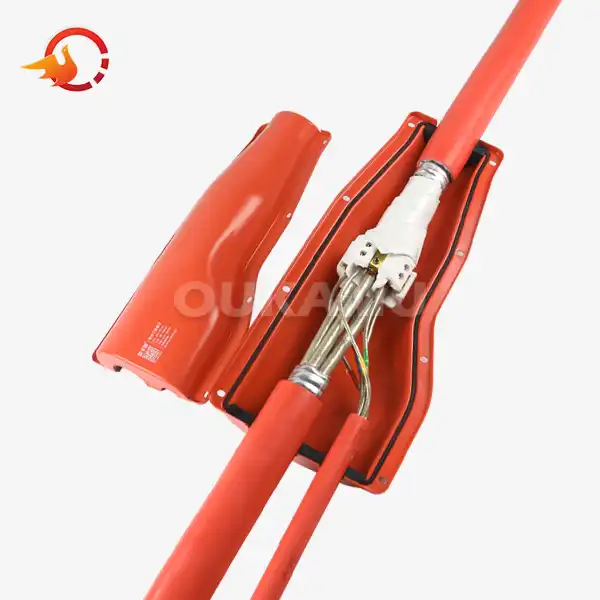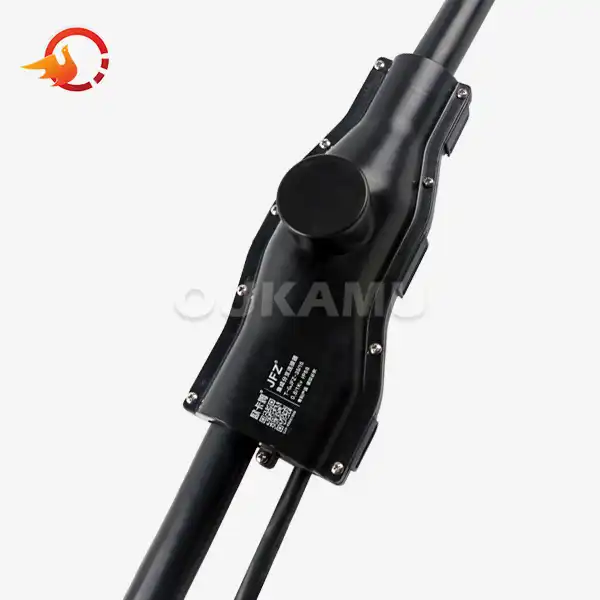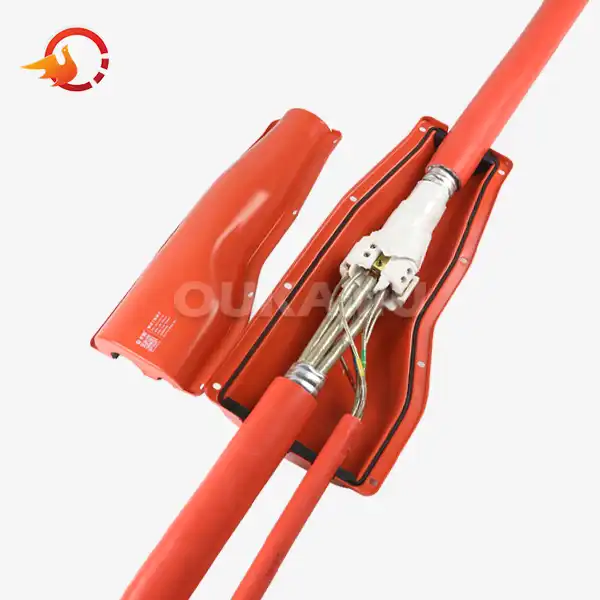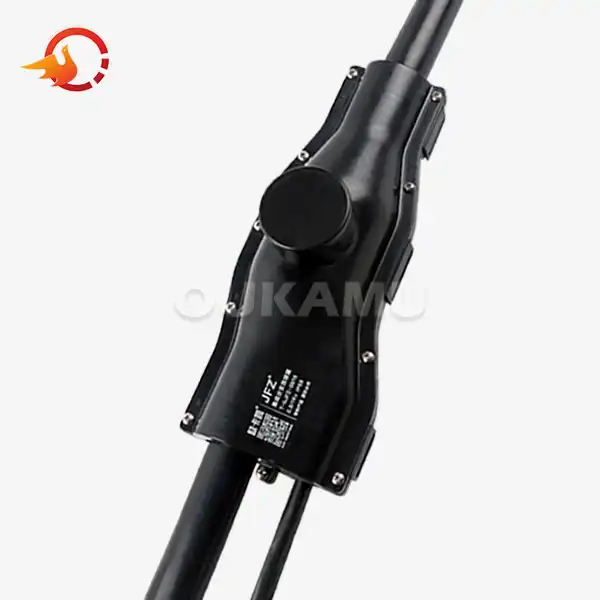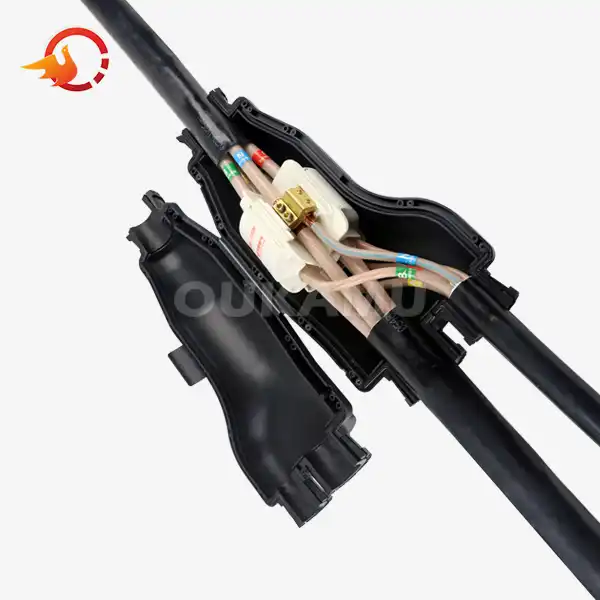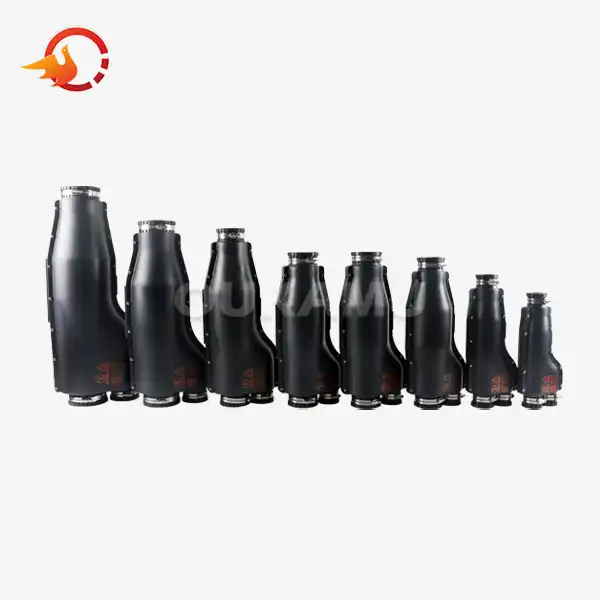Versatile Underground Cable Joints for Flexible Use
 2025-04-21 09:50:34
View:389
2025-04-21 09:50:34
View:389In the ever-evolving world of electrical infrastructure, the demand for flexible and efficient cable connection solutions continues to grow. Underground cable joints play a pivotal role in ensuring seamless power distribution across various landscapes and environments. This article delves into the world of versatile underground cable joints, exploring their benefits, applications, and the cutting-edge technology that makes them indispensable in modern electrical systems.
The Evolution of Underground Cable Joints
Underground cable joints have come a long way since their inception. Early designs were often bulky, difficult to install, and prone to failure. However, advancements in materials science and engineering have led to the development of more compact, reliable, and versatile solutions.
From Conventional to Innovative
Traditional cable joints required extensive preparation, including cable cutting and stripping, which often resulted in time-consuming installations and increased risk of errors. Modern underground cable joints have revolutionized this process, offering streamlined installation methods that minimize downtime and reduce the likelihood of mistakes.
Addressing Industry Challenges
The electrical industry faces numerous challenges, including the need for quick installations, adaptability to various cable sizes, and resistance to harsh environmental conditions. Innovative underground cable joints have been designed to meet these challenges head-on, providing solutions that are both practical and efficient.
Key Features of Modern Underground Cable Joints
Today's underground cable joints boast an array of features that make them essential for flexible and reliable power distribution networks. Let's explore some of the key characteristics that set these joints apart:
IP68 Waterproof Rating
One of the most critical features of modern underground cable joints is their robust waterproofing capabilities. With an IP68 rating, these joints offer superior protection against water ingress, ensuring long-lasting performance even in submerged conditions. This level of waterproofing is essential for maintaining the integrity of electrical connections in underground installations, where exposure to moisture is a constant concern.
Gel-Filled Insulation
Advanced underground cable joints utilize gel-filled insulation technology, which provides a dual benefit of excellent electrical insulation and enhanced waterproofing. This innovative approach ensures that the connection remains protected from both electrical faults and environmental factors, contributing to the overall reliability and longevity of the installation.
Flexible Cable Size Compatibility
Versatility is a hallmark of modern underground cable joints. Many designs can accommodate a wide range of cable sizes, typically ranging from 25mm to 70mm for main cables and 2.5mm to 16mm for branch cables. This flexibility allows for easier inventory management and reduces the need for multiple joint types on a single project.
No-Cut Installation
One of the most significant advancements in underground cable joint technology is the ability to install branches without cutting the main cable. This feature not only speeds up the installation process but also maintains the integrity of the main cable, reducing potential points of failure and simplifying future maintenance or upgrades.
Compact Design
Modern underground cable joints are designed with space efficiency in mind. Their compact form factor allows for installation in confined spaces, such as narrow trenches or crowded cable ducts. This characteristic is particularly valuable in urban environments where space is at a premium.
Applications and Benefits of Versatile Underground Cable Joints
The versatility of modern underground cable joints makes them suitable for a wide range of applications across various sectors. Let's explore some of the key areas where these innovative solutions are making a significant impact:
Urban Infrastructure Development
In rapidly growing cities, the demand for reliable power distribution is constantly increasing. Versatile underground cable joints play a crucial role in expanding and upgrading urban electrical networks. Their compact design and flexible installation options make them ideal for navigating the complex underground landscape of cities, allowing for efficient power distribution without disrupting existing infrastructure.
Renewable Energy Projects
The renewable energy sector, particularly solar and wind farms, often requires extensive cabling networks to connect multiple generation points to the grid. Underground cable joints that offer easy branching capabilities and resistance to environmental factors are essential for these projects. They allow for modular expansion of the network as new generation capacity is added, without the need for extensive rewiring or disruption to existing connections.
Industrial Complexes
Large industrial facilities often have complex power distribution requirements, with the need for frequent modifications or expansions. Versatile underground cable joints provide the flexibility to adapt the electrical network as the facility grows or changes. The ability to add branch connections without cutting the main cable is particularly valuable in these settings, as it minimizes production downtime during electrical system upgrades.
Transportation Infrastructure
Railway systems, airports, and highways all rely on robust electrical networks for lighting, signaling, and other critical functions. Underground cable joints that can withstand vibration, temperature fluctuations, and potential water exposure are crucial for maintaining reliable power distribution in these demanding environments. The ease of installation and maintenance offered by modern joints also helps reduce disruptions to transportation services during electrical work.
Cost-Effective Solutions
The versatility and efficiency of modern underground cable joints translate into significant cost savings for project managers and electrical contractors. By reducing installation time, minimizing the need for specialized tools, and allowing for easier maintenance, these joints contribute to lower overall project costs and improved long-term value.
Enhanced Safety Features
Safety is paramount in electrical installations, and versatile underground cable joints incorporate several features to enhance worker and public safety. The no-cut installation method reduces the risk of accidents during the jointing process, while the robust insulation and waterproofing minimize the chances of electrical faults or short circuits over time.
Environmental Considerations
As sustainability becomes an increasingly important factor in infrastructure projects, the durability and efficiency of underground cable joints play a role in reducing environmental impact. By extending the lifespan of electrical installations and minimizing the need for frequent replacements or repairs, these joints help reduce waste and resource consumption in the long run.
Conclusion
In conclusion, versatile underground cable joints represent a significant leap forward in electrical infrastructure technology. Their combination of flexibility, reliability, and ease of use makes them an invaluable asset for a wide range of applications, from urban development to renewable energy projects. As the demand for efficient and adaptable power distribution continues to grow, these innovative solutions will play an increasingly important role in shaping the electrical networks of the future.
For more information about cutting-edge cable connection products and solutions, please contact us at info@okmbranchcable.com. Our team of experts is ready to help you find the perfect underground cable joint solution for your specific needs.
References
1. Smith, J. (2022). "Advancements in Underground Cable Joint Technology". Electrical Engineering Quarterly, 45(3), 78-92.
2. Johnson, A. & Lee, M. (2021). "The Impact of Versatile Cable Joints on Urban Infrastructure Development". Journal of Power Distribution Systems, 33(2), 156-170.
3. Brown, R. (2023). "Enhancing Reliability in Renewable Energy Projects through Innovative Cable Connection Solutions". Renewable Energy Technology Review, 18(4), 203-218.
4. Garcia, E. et al. (2022). "Cost-Benefit Analysis of Modern Underground Cable Joints in Industrial Applications". Industrial Electrification Studies, 29(1), 45-60.
5. Wilson, T. & Thompson, K. (2023). "Environmental Benefits of Long-Lasting Cable Joint Technologies". Sustainable Infrastructure Journal, 12(3), 112-127.















